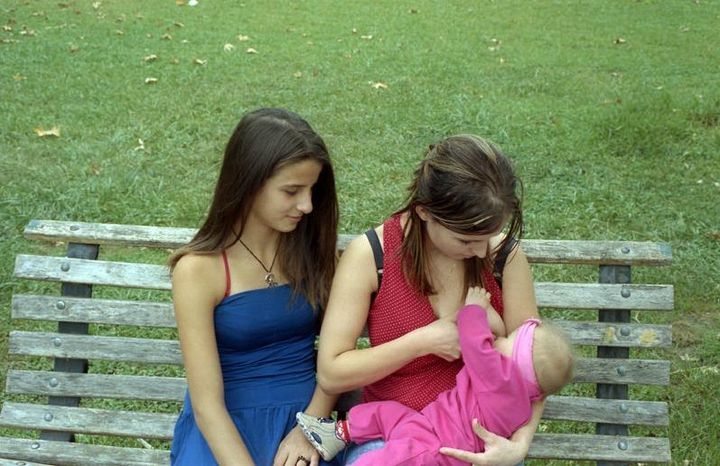Baby’s sleep is one of the most delicate things that mothers have to deal with. Whether the baby sleeps in a nearby cot, bassinet, crib, or side car or even shares the bed with you, it is a general principle to make sure that the baby is safe. Newborns also have a hard time distinguishing between day and night and it your responsibility as the mother to teach them. The most important thing is to make sure that the baby has comfortable and sound sleep.
Some of the tips to ensure that the baby is safe include:
Dealing with SIDS (sudden infant deaths)
Many of these infant deaths are as a result of fatal sleeping accidents by infants. Some of the risks include:
Sleeping the baby on their tummy and side.
Sleeping baby on soft surfaces such as sofa, soft mattress, water-bed, lamb’s wool, or pillows.
Baby’s head and neck getting covered by beddings.
Ways to avoid sudden infant deaths include:
- Put babies to sleep on their back.
This is the safest position for healthy babies to sleep. Babies are more likely to die of SIDS and fatal accidents if they sleep on their tummies or side. If you are worried about the baby chocking due to vomit, it is good to know that a healthy baby put to sleep on their back are less likely to choke. Those who are put to sleep on their tummies and side tend to choke more. When your baby can roll over, keep putting him on his back, but also let him find his own sleeping position.
- Make sure the babies’ heads can’t get covered while sleeping.
When placing your baby in the cot, place them in a way that the legs are at the bottom end of the cot. Tuck in the bed sheets so that they do not cover the baby’s head. You can choose to use a safe infant sleeping bag instead of blankets. Sleeping bags that have a fitted neck and armholes with no hoods are the safest.
- Use firm and well-fitting mattresses.
Make sure that the cot has no gaps between the mattress and the edges of the cot. These gaps can get the baby’s head jammed. Ensure that the mattress is not tilted. For a portable cot, use firm, thin and well-fitting mattress. Do not add another mattress or padding over the mattress. Also ensure that soft objects and toys are out of the baby’s sleeping area.
About crib mattresses.

There are various types of crib mattresses on the market. They come in foam, innerspring, and organic mattresses. Breathable mattresses are the best for baby cribs, they allow the baby to breathe freely even when they sleep with their face pressed up against them.
Get the right size of mattress to eliminate the case of entrapment which can lead to suffocation. The size if the crib and mattress are standardized by the federal government, but there can be slight variations.
The firmer the crib mattress the better. Babies adjust to firm mattresses easily unlike adults. It also helps to strengthen the baby’s neck and shoulder muscles. The mattress should also be resilient and go back to its normal shape fast.
The mattress cover should be fitting and also water resistant. Venting on the mattress allows for better airflow and also help to keep it odorless.
Avoid your baby sleeping on couches or make shift bedding.
Babies sleeping on a couch with or without someone is very dangerous. The baby can get stuck between pillows, cushions or slip down until the head is covered by the blankets. He/she can also roll over and fall.
Dress your baby is warm clothing, not hot.
Overheating is a cause of SIDS. Ensure your baby has the right clothing. When your baby is sleeping indoors ensure the head is not covered to allow the baby cool and not overheat. Do not worry when the baby’s feet and hands are cool- that is normal.
Avoid cot bumpers, soft toys, pillows and doonas.
Babies can easily suffocate if they are rolled into cot bumpers, pillows, doonas or soft toys. It is safe to keep such objects away from the baby’s sleeping area.
Other safety tips include:
Do not leave your baby to sleep alone in an adult bed.
Adult beds have entrapment hazards as well as the dangers of suffocation from soft bedding. Your baby is safe sleeping in their own crib or cot or even a mattress on the floor. It is also important to keep babies away from other young children who may roll over them.
Breastfeed your baby.

Studies have shown that breastfeeding gives added protection from SIDS. Babies who have been breast fed arouse more readily from deep sleep, which reduced sudden infant deaths. Breastfeeding and bed sharing are an ideal combination because the baby is able to nurse more frequently with less effort from the mother.
Avoid eye contact.
Eye contact causes excitement to the baby. This causes the baby to snap out of their sleep zone. This will make the baby sleep less due to excitement right before going to sleep. Avoid this when you are putting the baby to sleep and when the baby wakes up.
Co-sleeping.
It has been discovered that babies who co-sleep have more self-esteem and less anxiety. Place a co-sleep bassinet next to your bed. It also allows you to check on your baby more easily as well as breastfeed. Sharing a bed is not recommended.
Dreamfeed your baby.
This is a late-evening feeding that is done for babies who wake up feeling hungry. You do not have to wait for your baby to wake up hungry, you can feed your baby before you go to bed or while she is asleep. This allows the baby to have a full belly for uninterrupted sleep.
Use light strategy.
Lights are a way to push the baby’s biological go button. On the other side, darkness is a way to trigger melatonin in the brain, which is a key sleep hormone. Try to keep your baby’s day bright and the nights dark to help the baby figure out when it is time to sleep.
Massage your baby.
Babies and toddlers enjoy a massage before they go to sleep. It makes them go to sleep faster and they will also sleep for longer. Use soft strokes and moderate pressure to massage your baby.
Let your baby take naps.
These are important for the baby’s mental and physical growth. Do not omit naps in the hopes that your baby will sleep longer during the night. This is totally the opposite. Limiting of the naps should be done as the baby grows older.
Use overnight diapers.
Wet diapers cause the baby to wake up during the night. Super-absorbent overnight diapers along with an application of diaper cream for skin protection will help the baby to sleep longer and comfortably for the whole night.
Use of pacifiers.
These help to soothe the baby to sleep and studies also shows that they reduce the risk of SIDS. A good trick is to remove the pacifier from the baby’s mouth when it is asleep. This is to avoid the baby waking up when they fall asleep.
Swaddling.
Making a baby burrito is one of the most important skills. It is one of the most important things when it comes to baby slumber. Your baby was used to feeling tightly packed in the womb. Being wrapped and swaddled in a blanket duplicates the experience, hence helping to sleep better.
White noise.
Giving the baby a silent treatment is not the way to go. The baby was used to constant noises such as your heart beating, noisy stomach, hence silence may not be the way to help your baby. Some babies sleep easier with the help of white noise such as the noise of a machine or fan.
Conclusion.
A baby is the most precious thing a mother can have and losing them due to sudden infant death is the worst thing that could happen. This is avoidable with the help of ensuring that your baby sleeps safely at all times. It is important to take time to watch your baby sleep at all costs.
